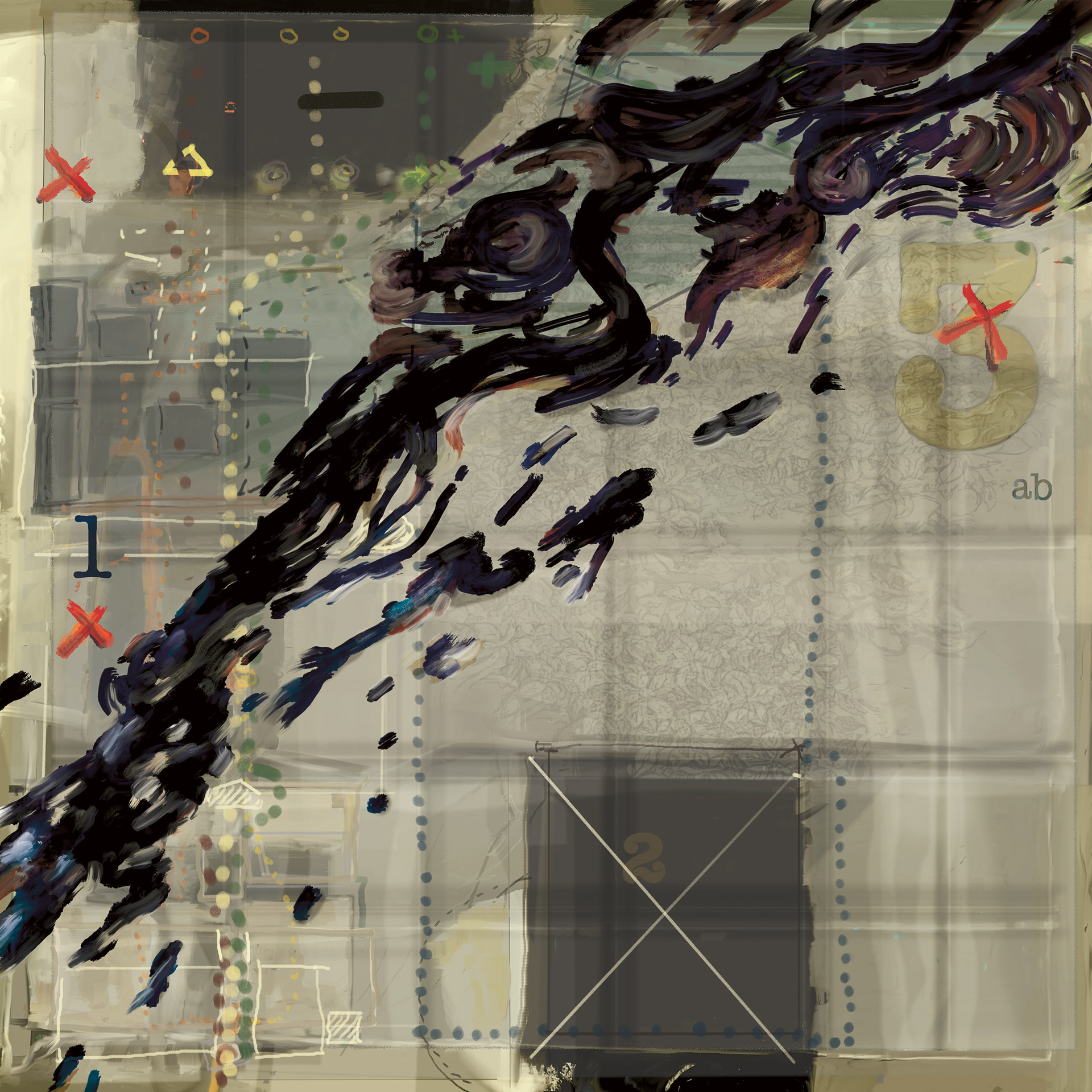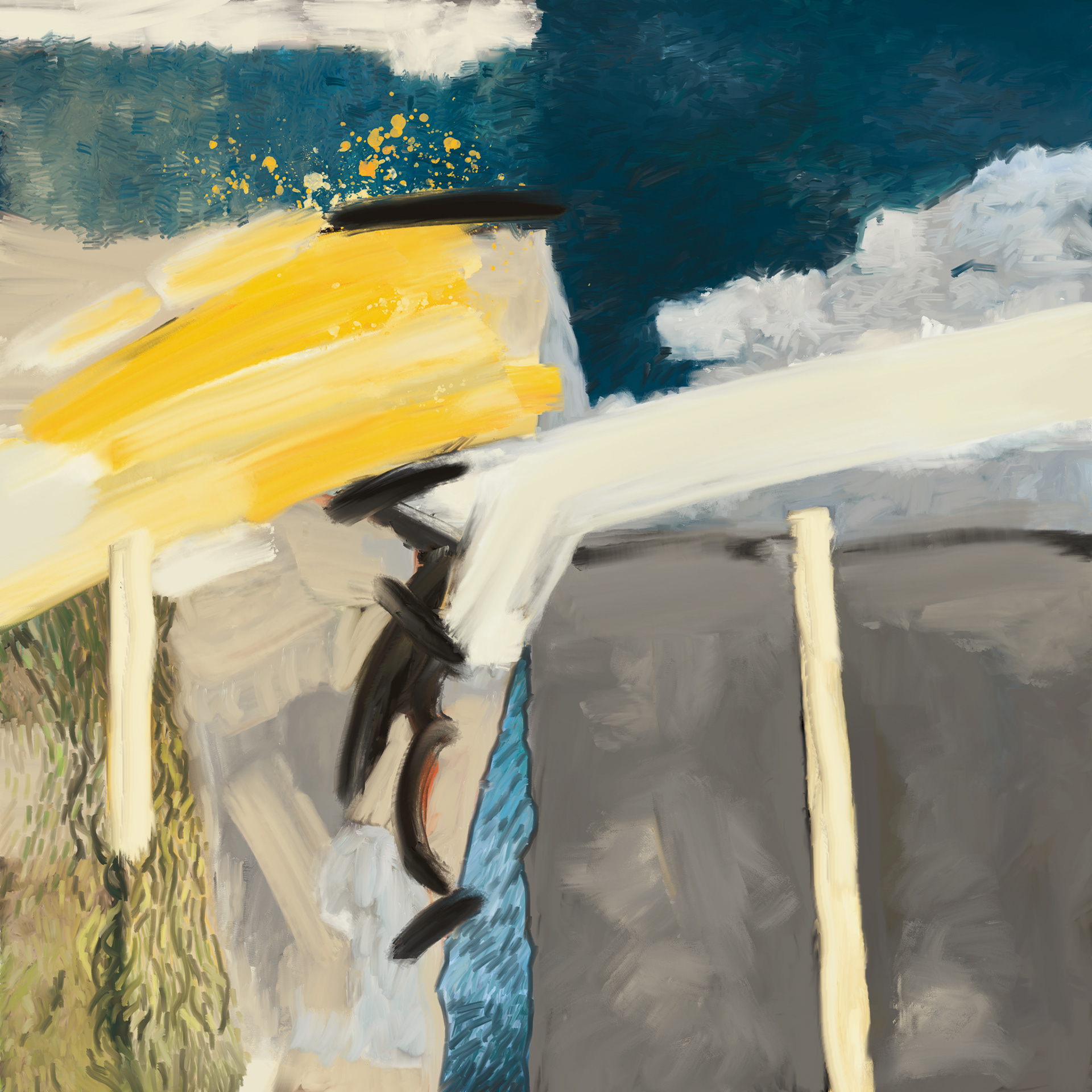Ich höre gerne Musik, vor allem Rock in seinen vielen Variationen, und ich nehme sie auf zwei Ebenen wahr – einerseits Klang und Rhythmus , andererseits die Texte.
Selbst Musik machen kann ich nicht, aber ich kann Musik die ich mag visualisieren. Weil ich schon seit einigen Jahrzehnten in der Malerei zuhause bin, liegen dort auch die Wurzeln meiner heutigen Arbeiten. Der klassische Umgang mit Pinsel, Farbe und Leinwand wird allerdings heute durch digitale Techniken nachempfunden und erweitert. Das im Gegensatz zu früher deutlich schnellere Arbeiten mit dem digitalen Medium beschleunigt auch den dahinter stehenden Gedankenprozess und ermutigt zu spontanen Experimenten. Wie hätte zum Beispiel Edward Hopper einen Song von Neil Young interpretiert, oder hätte Frank Zappa Willem de Kooning zu abstrakten Expressionen anregen können? Wie läßt sich Klang oder Rhythmus (oder beides zusammen) mit digitalen Techniken anschaulich machen?
Da gibt es viele „was wäre wenn“s. Grund genug eine Untersuchungsreihe zu starten. Hier ist nun die erste Fallstudie/Case Study:
Am Anfang war der Gedanke, daß die Musik von Brian Eno eine solche Untersuchung wert wäre. Und es wäre vielleicht heute noch nur ein Gedanke, wenn ich nicht auf einem Spaziergang „On Some Faraway Beach“ von Enos 1973 erschienen Album „Here Come The Warm Jets“ im Ohr gehabt und sich die Verbindung zu dem sich mir bietenden Panorama geschlossen hätte.
I like listening to music, especially rock in its many variations, and I perceive it on two levels - on the one hand, sound, and rhythm, and the other hand, the lyrics.
I am not a musician, but I can visualize music that I like. Because painting has been my intellectual home for several decades, that is where the roots of my current work lie. However, the classic use of brushes, paint, and canvas is now replicated and expanded using digital techniques. Working with the digital medium, which is much faster than before, also accelerates the thought process behind it and encourages spontaneous experiments. How, for example, would Edward Hopper have interpreted a song by Neil Young, or could Frank Zappa have inspired Willem de Kooning to create abstract expressions? How can sound or rhythm (or both together) be made clear using digital techniques?
There are a lot of “what ifs". Reason enough to start a series of investigations. Here is the first case study:
The initial thought was that Brian Eno's music would be worthy of such investigation. And it would perhaps still be just a thought today if I hadn't heard “On Some Faraway Beach” from Eno's 1973 album “Here Come The Warm Jets” while I was walking and the connection to the panorama presented to me had been made.
FARAWAYLAND #1 / EXPLORING


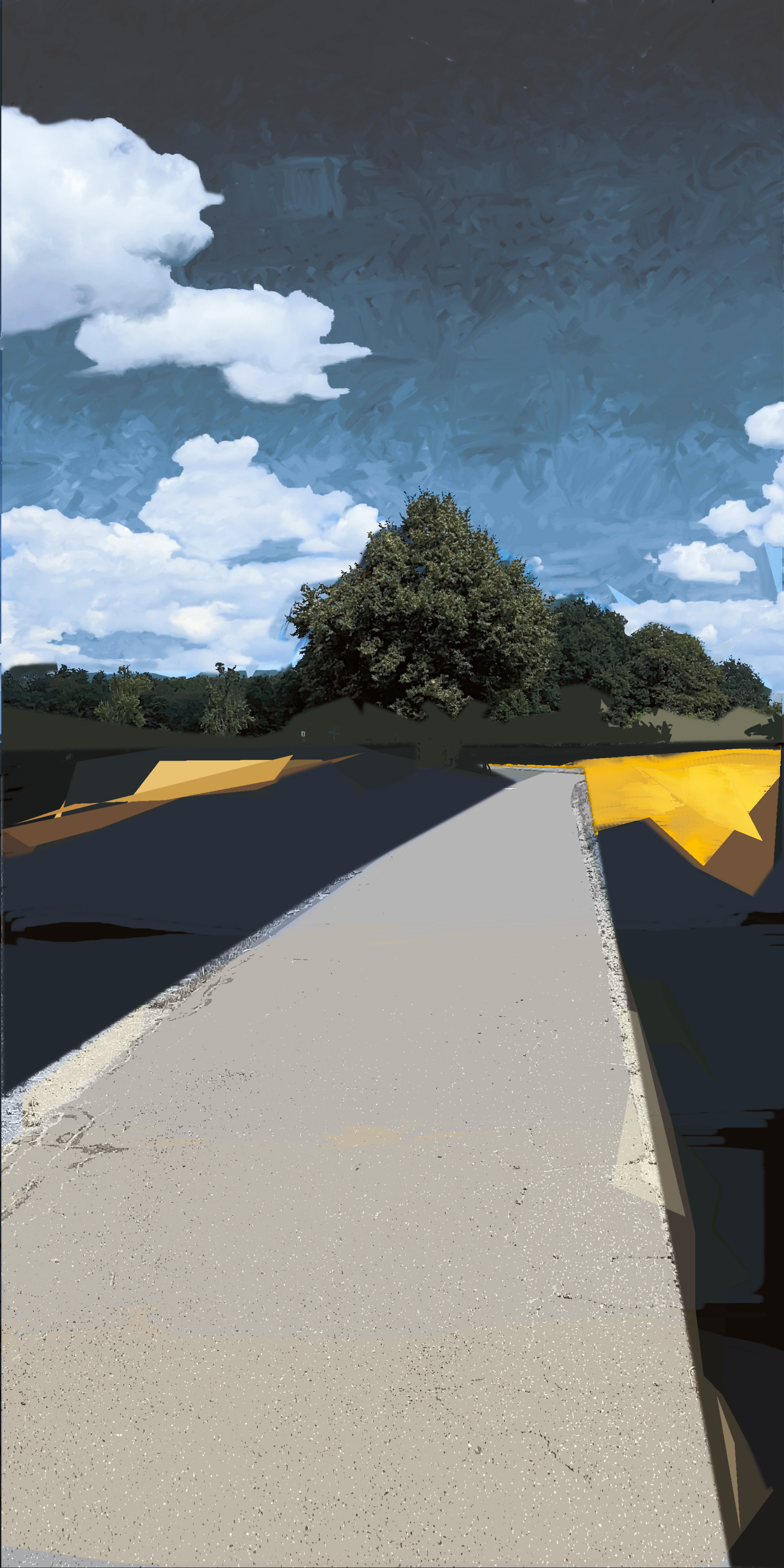
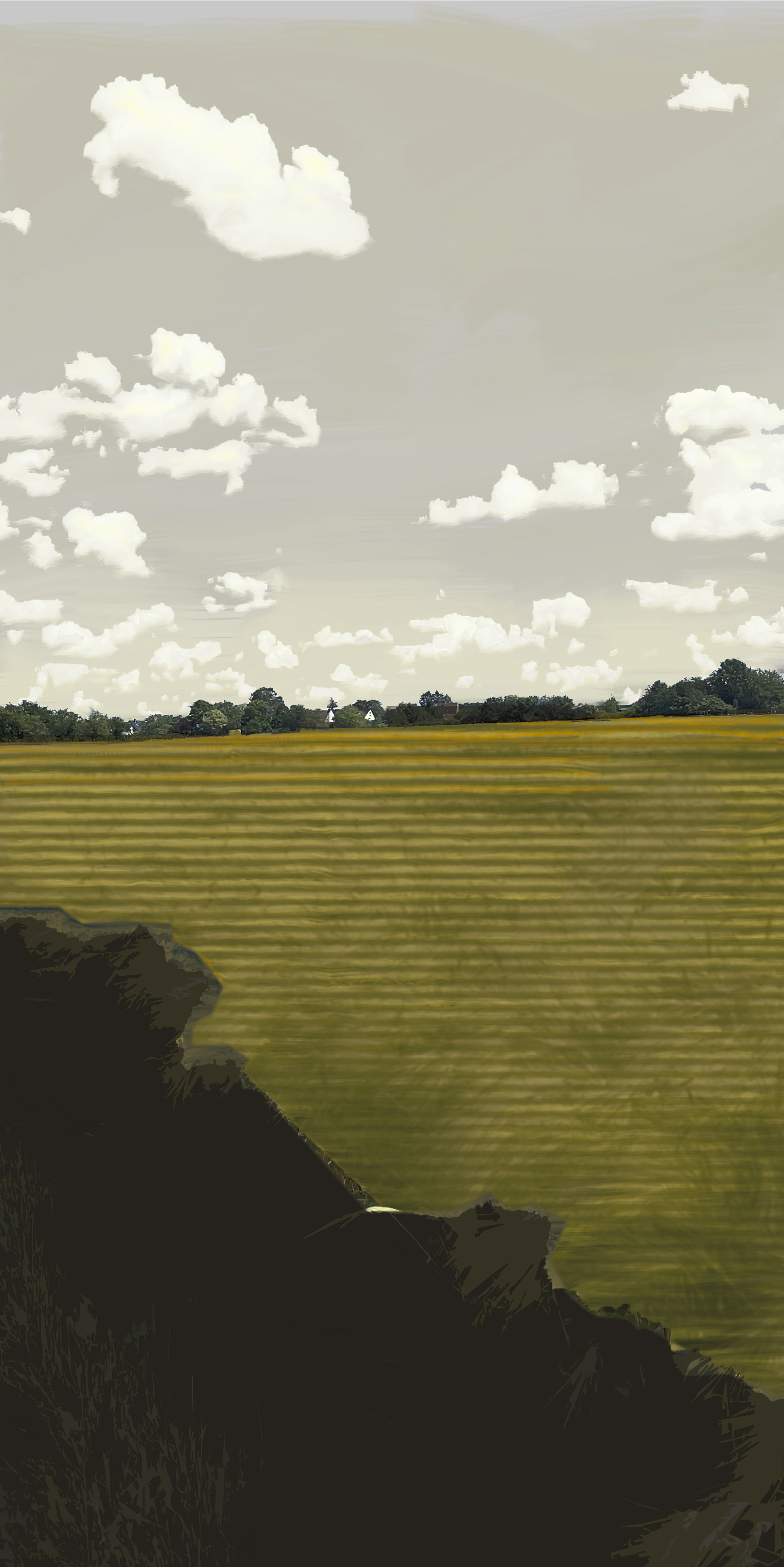


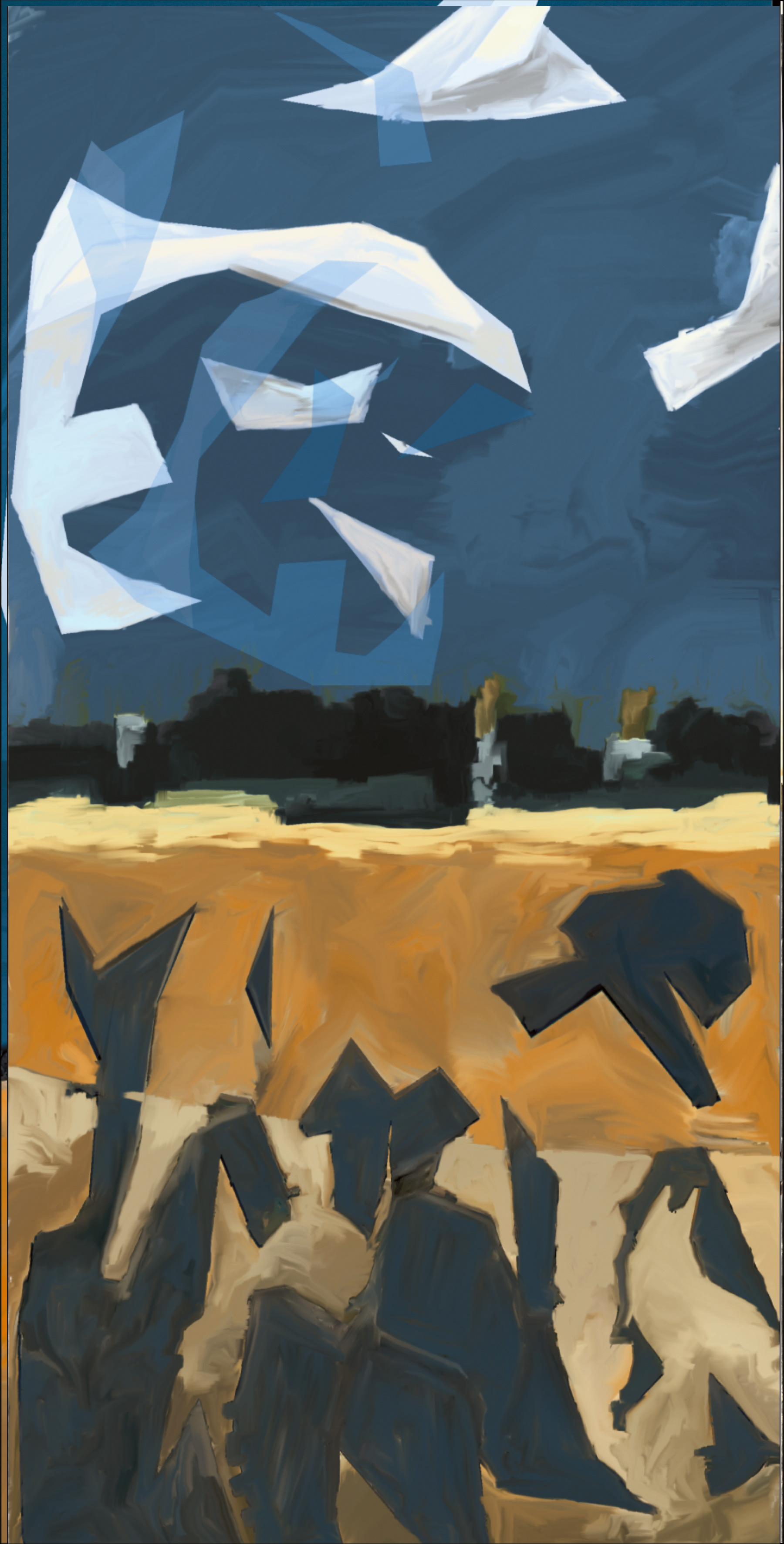
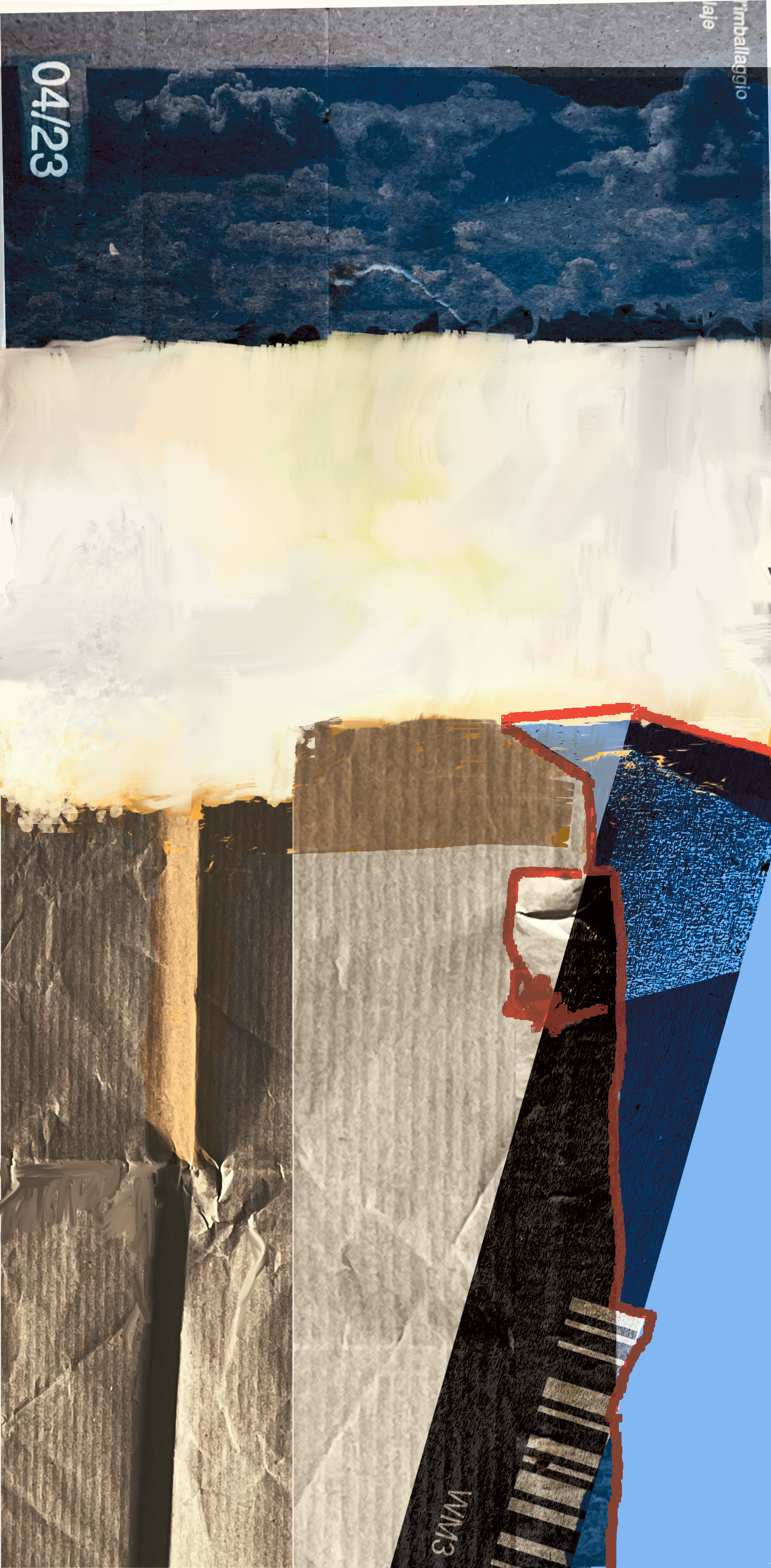
Alles ist in Bewegung, und so entstand nach den ersten Erforschungen zunächst ein Arbeitstitel: weil das Panorama keinen Strand zu bieten hatte, ist es nun „Faraway Land“; weil sich schon bald eine Vielzahl von Variationen ankündigte, ist Bob Dylans „I Contain Multitudes“ von seinem Album „Rough And Rowdy Ways“ von 2020 der Untertitel.
(Dies als Beispiel dafür, daß bisweilen nur ein genial gewählter Titel eines Songs schon Bilder liefert…)
Technische Anmerkung. Das zu Grunde liegende Foto habe ich in acht Segmente unterteilt, in denen jeweils andere Experimente der Darstellung stattfanden. Alle acht Teile bilden zusammen eine Einheit, die sich einer bestimmten Fragestellung widmet. Die Kopie einer Einheit ist sodann die Grundlage einer neuen Forschungsreihe mit einer neuen Fragestellung.
Diese erste Einheit (Exploring) ist noch ein vorsichtiges Herantasten an die Möglichkeiten
Everything is in motion, and so after the initial research a working title was created: because the panorama did not have a beach to offer, it is now “Faraway Land”; Because a multitude of variations soon appeared, Bob Dylan's "I Contain Multitudes" from his 2020 album "Rough And Rowdy Ways" is the subtitle.
(This is an example of the fact that sometimes just an ingeniously chosen title of a song can provide images...)
Technical note. I divided the underlying photo into eight segments, in each of which different representational experiments took place. All eight parts together form a unit that is dedicated to a specific question. The copy of a unit is then the basis of a new series of research with a new question.
This first unit (Exploring) is a cautious approach to the possibilities.
FARAWAYLAND #2 / ELECTRONIC PATTERNS
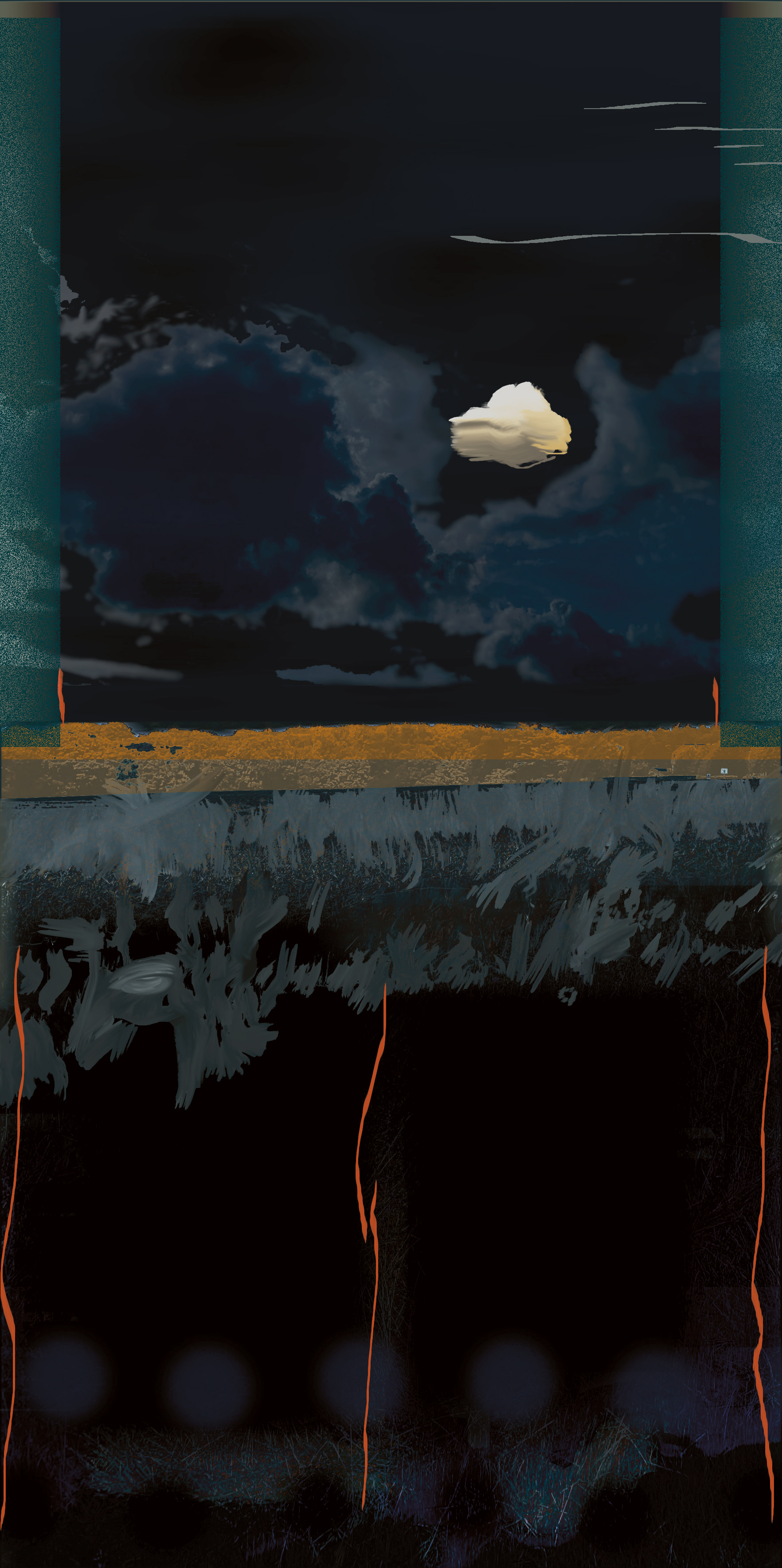

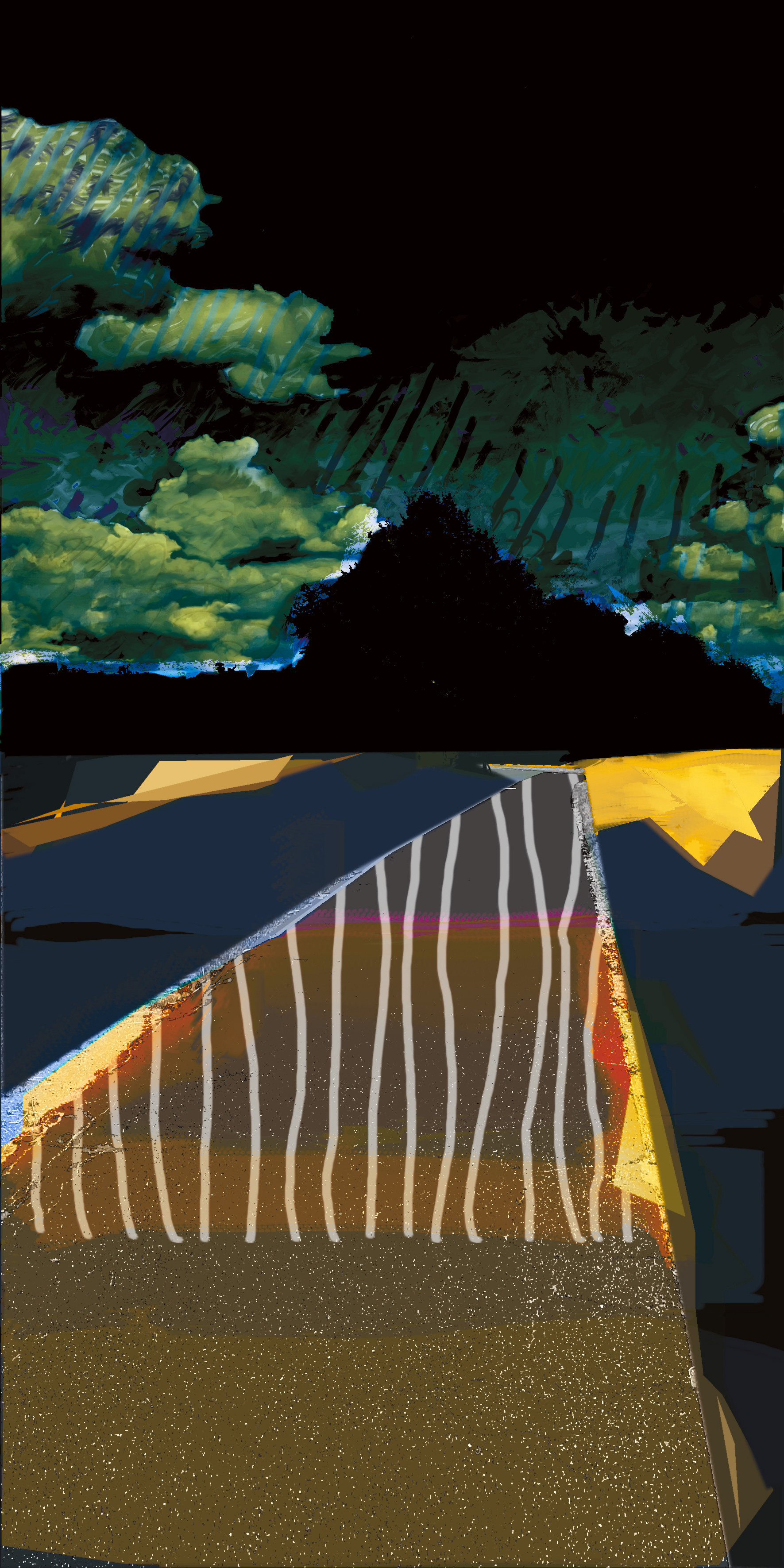
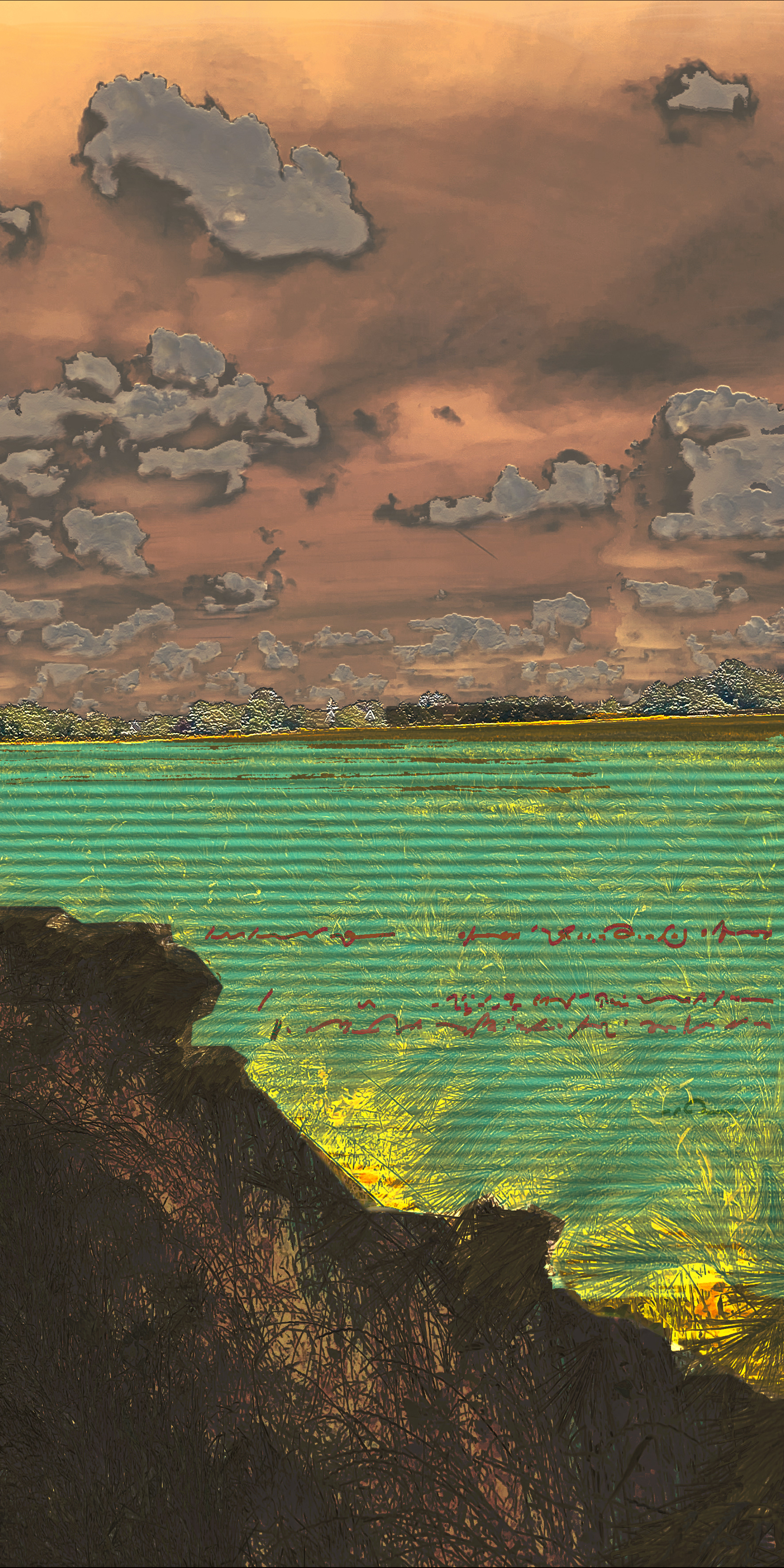
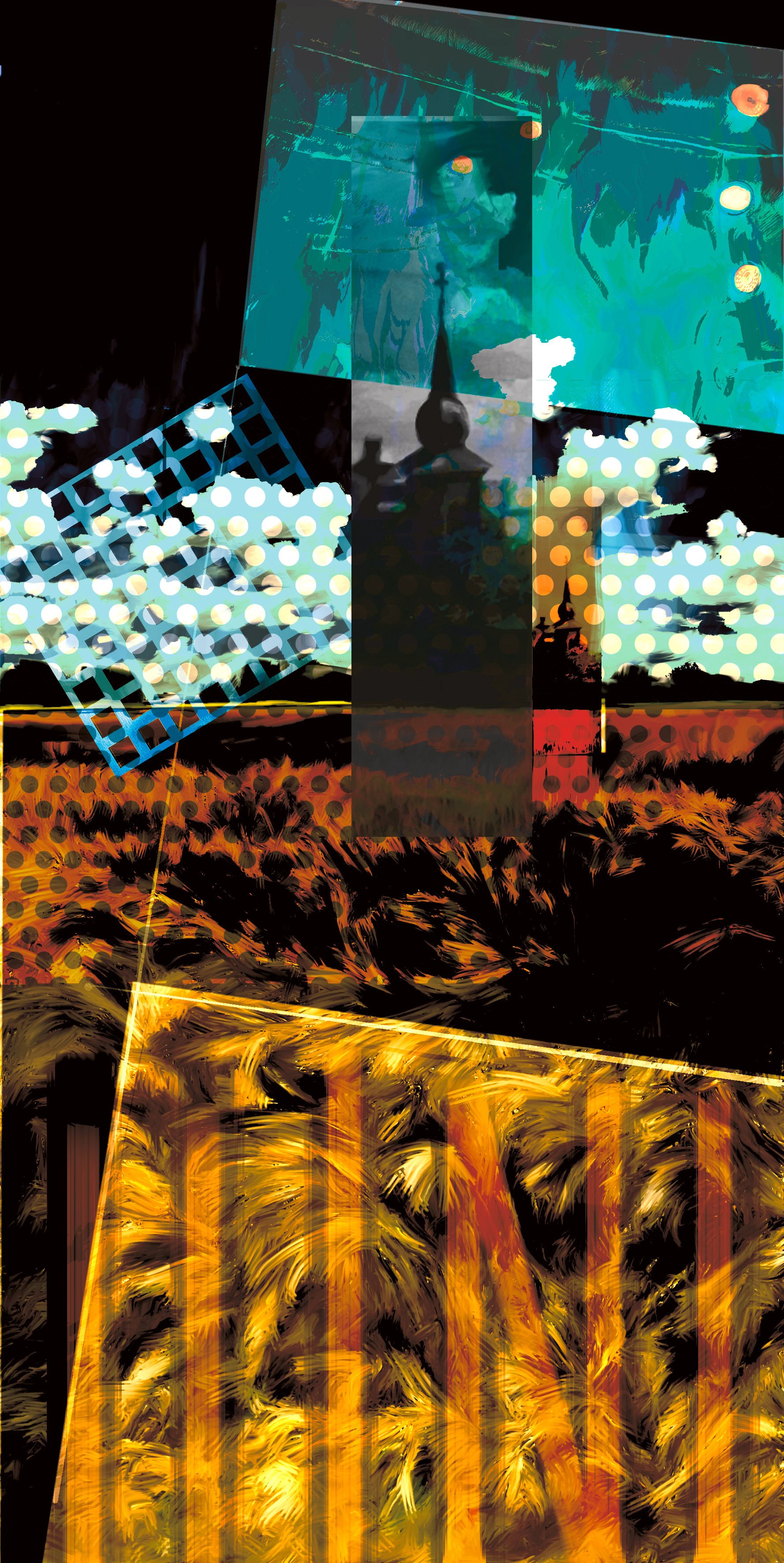
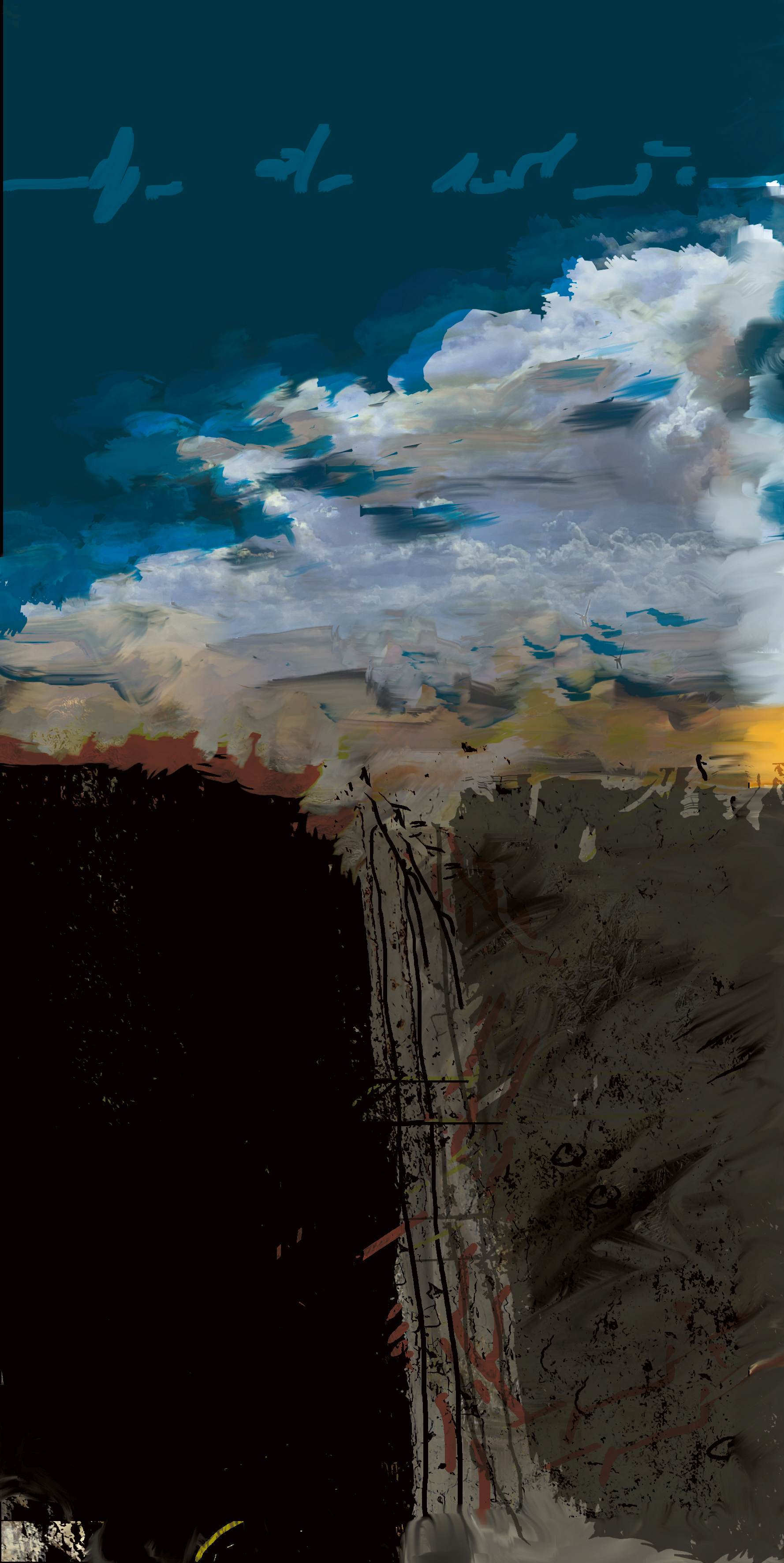


Einheit zwei spielt mit den digitalen Möglichkeiten von Filtern, Ebenenstilen und Farbgebungen. Einheit drei beschränkt sich auf die Illusion der Ölmalerei, und die letzte Einheit erforscht das zeichnerische Potenzial des Ausgangsmotivs.
Unit two plays with the digital possibilities of filters, layer styles, and color schemes. Unit three is limited to the illusion of oil painting, and the last unit explores the graphic potential of the original motif.
FARAWAYLAND #3 / PURE PAINTING

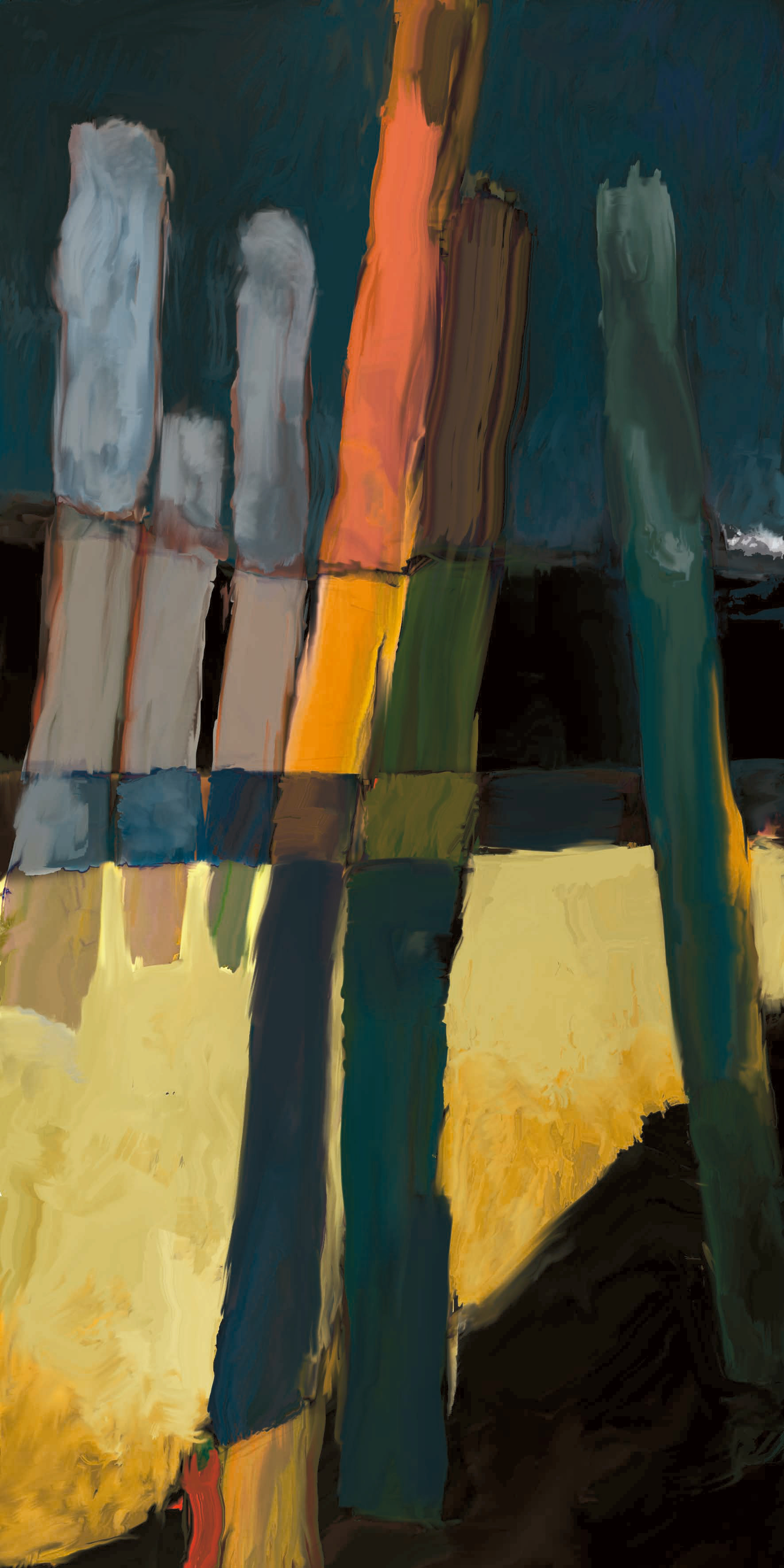
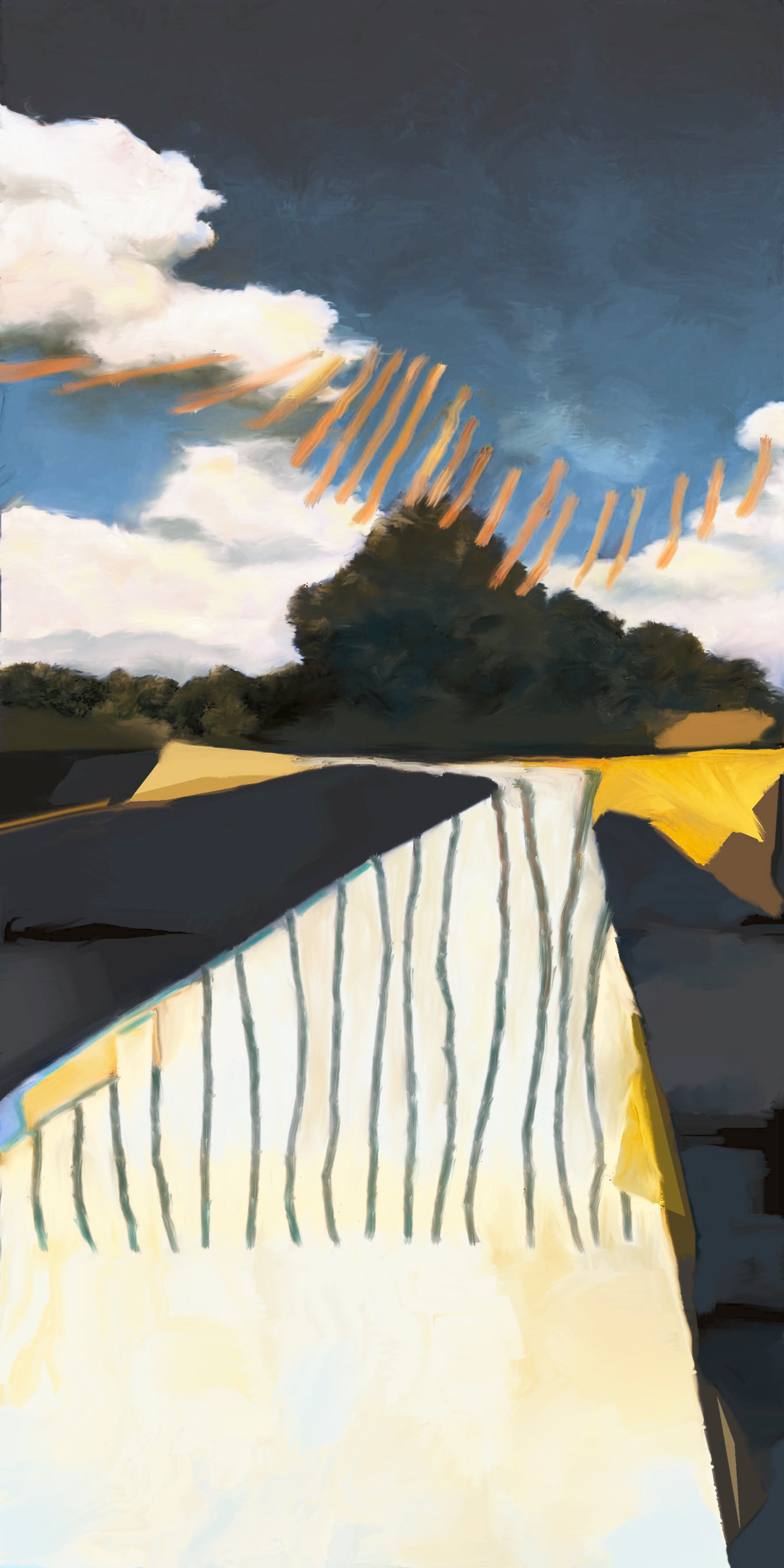

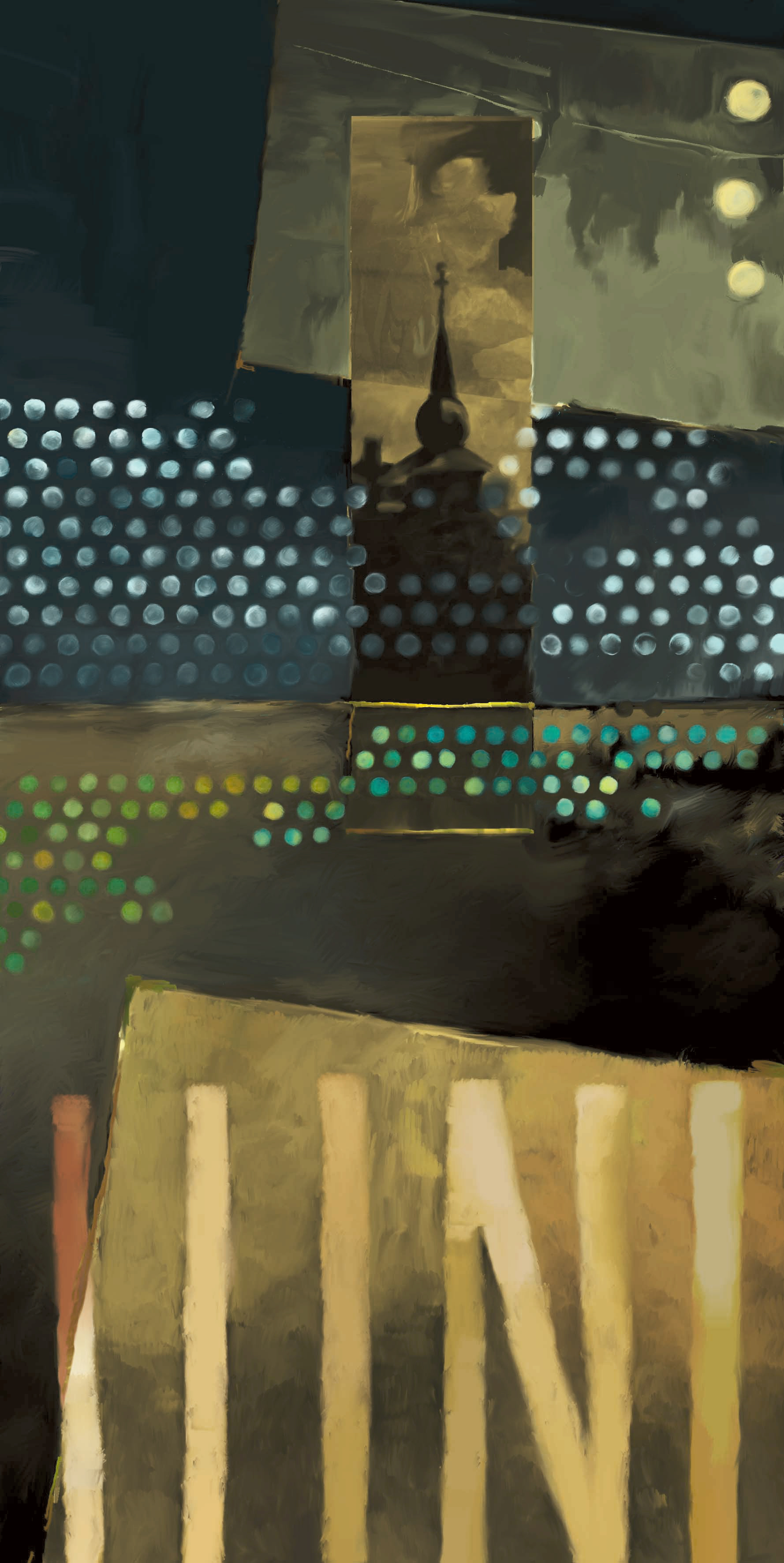
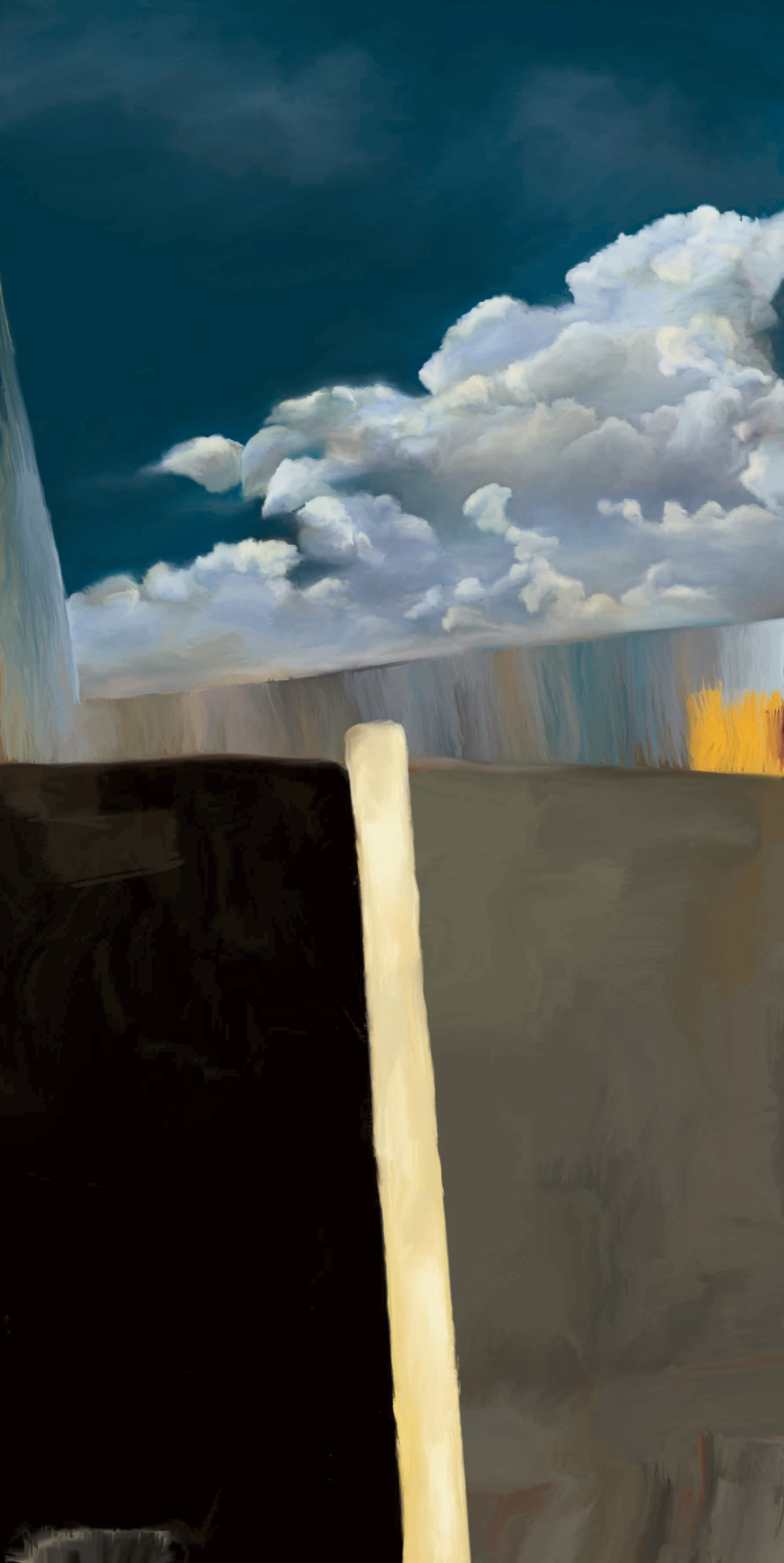
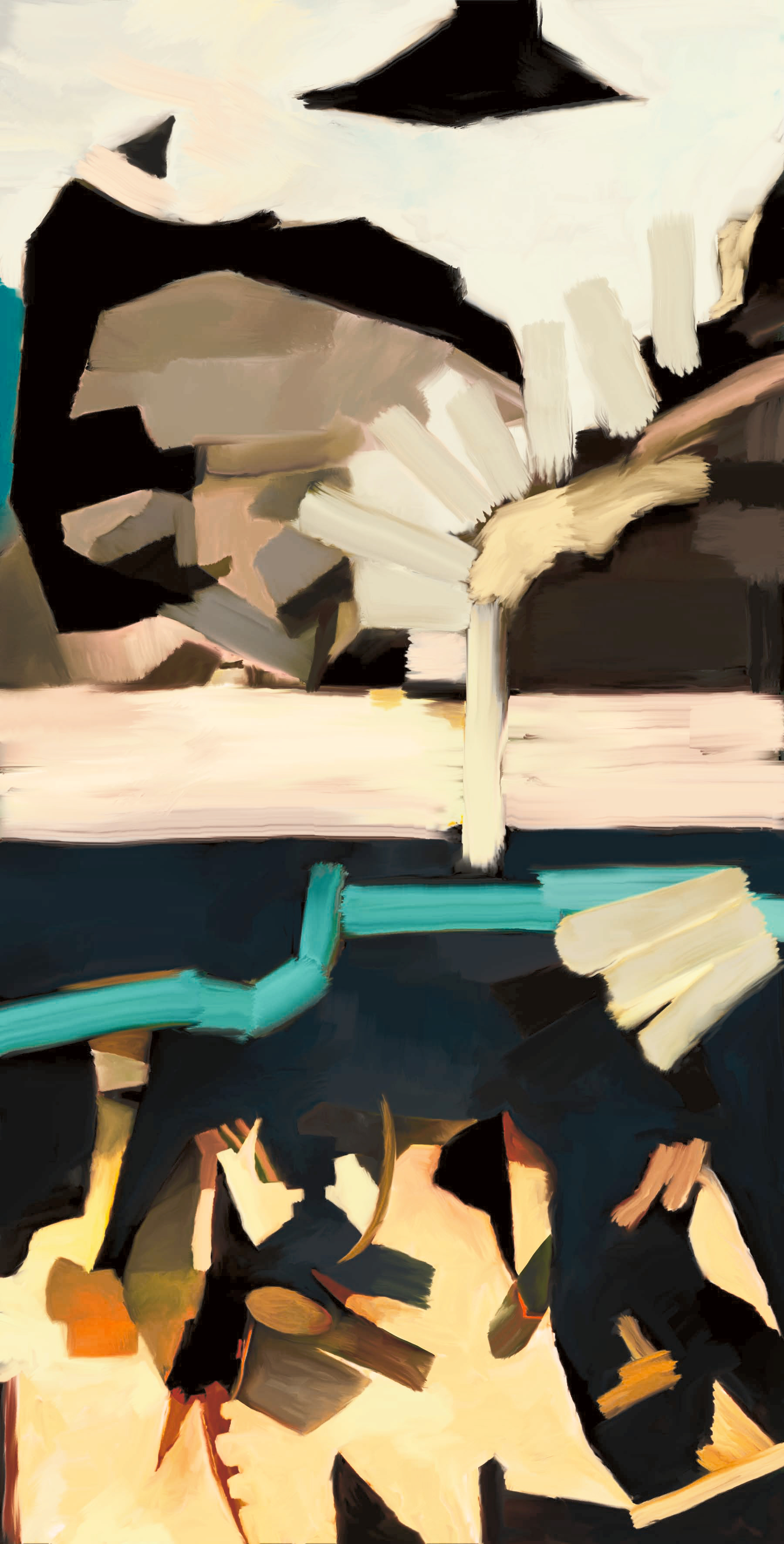

Einheit drei beschränkt sich auf die Illusion der Ölmalerei; Malerei, Kunst allgemein ist ja vom Wesen her Illusion, und mit digitalen Werkzeuge die Illusion von Malerei zu erzeugen, befördert das Ganze auf eine neue Ebene
Unit three focuses on the illusion of oil painting; painting, and art in general, is inherently an illusion, and using digital tools to create the illusion of painting takes the whole thing to a new level
FARAWAYLAND # 4 / DRAWING & BEYOND

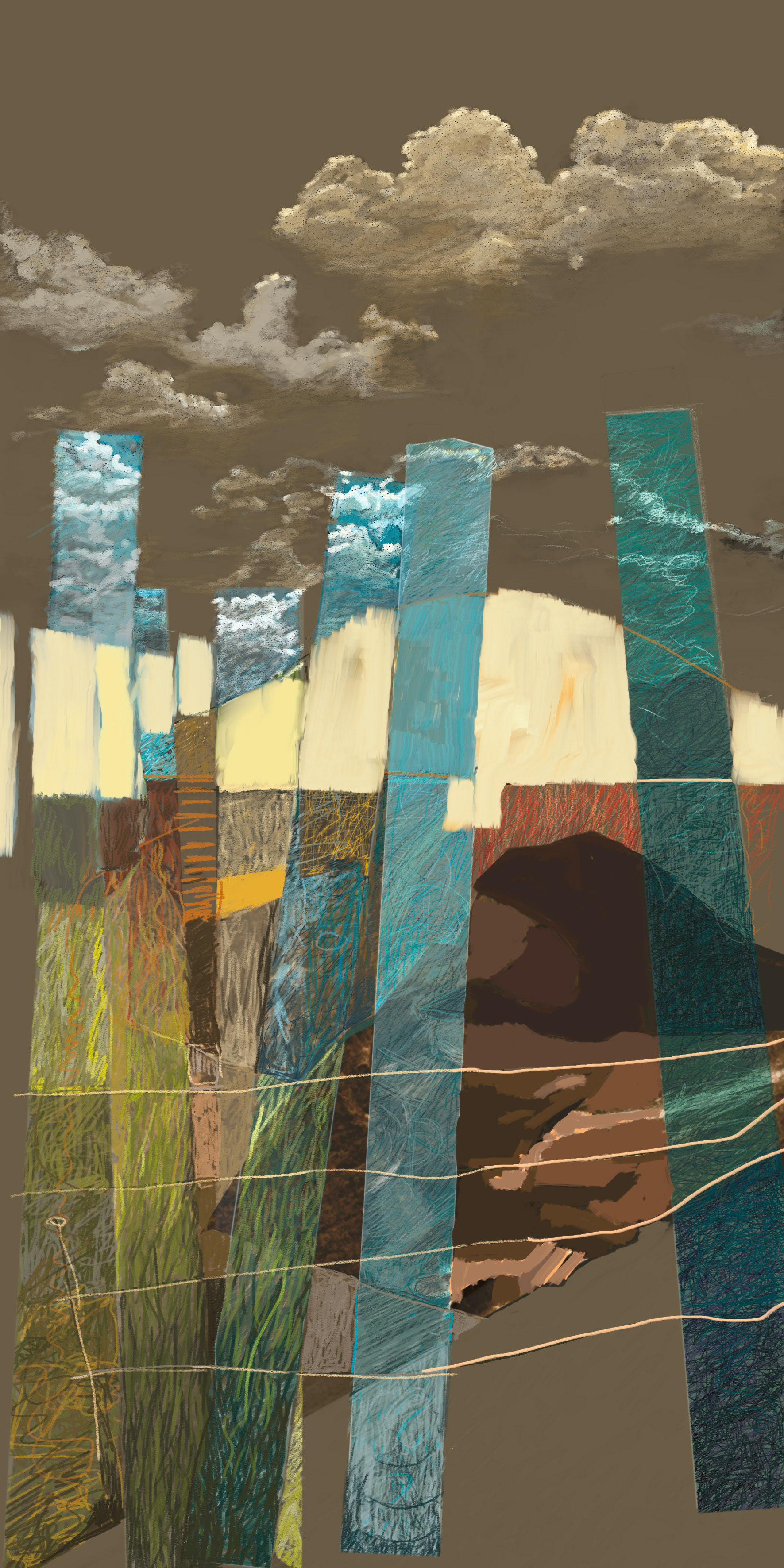
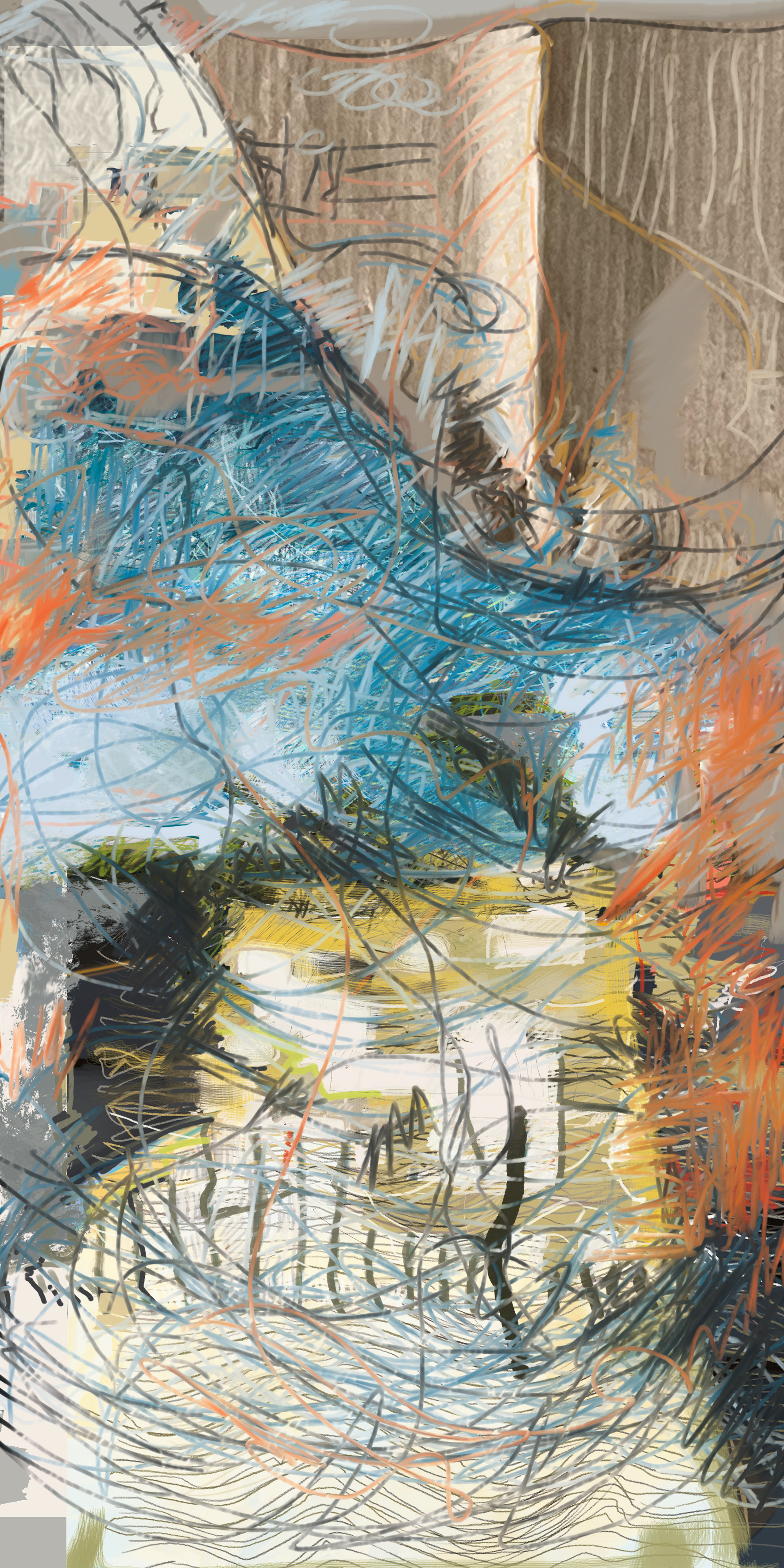
Viertens: Zeichnungen sind ein Mittel von ganz anderer Art, und darum gibt es auch hierzu Untersuchungen.
Manchmal, im Zuge der Untersuchungen, schweift der Blick ab auf die schon vorliegenden Ergebnisse, liefert neue Interpretationen.
Fourth, drawings are a completely different kind of medium, and that's why there are also studies on this.
Sometimes, in the course of research, the focus wanders to the existing results, providing new interpretations.
Sometimes, in the course of research, the focus wanders to the existing results, providing new interpretations.

